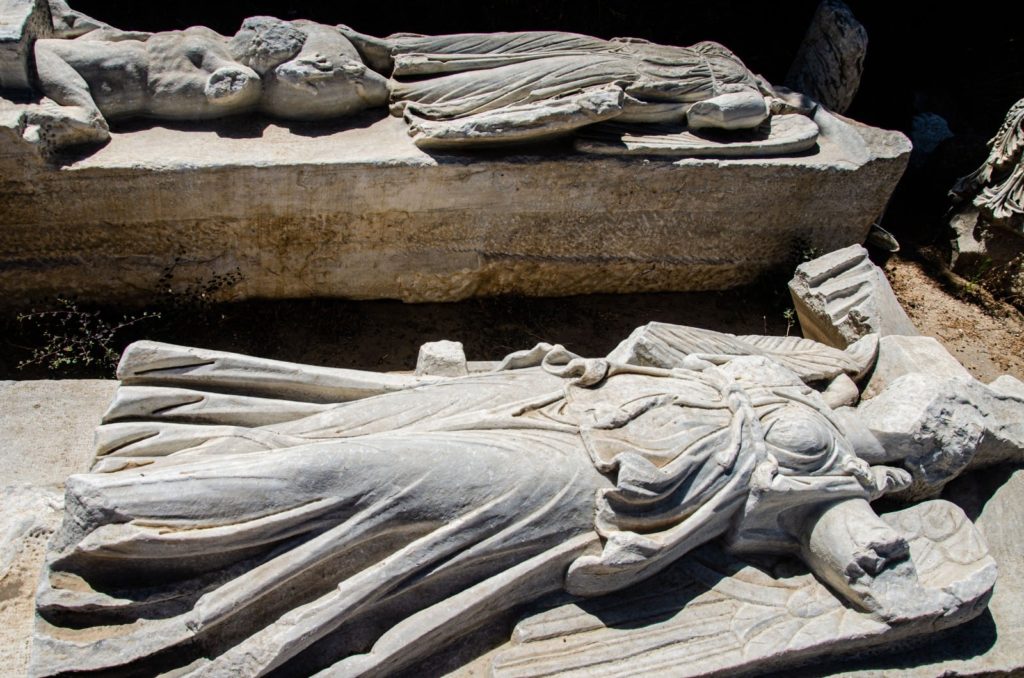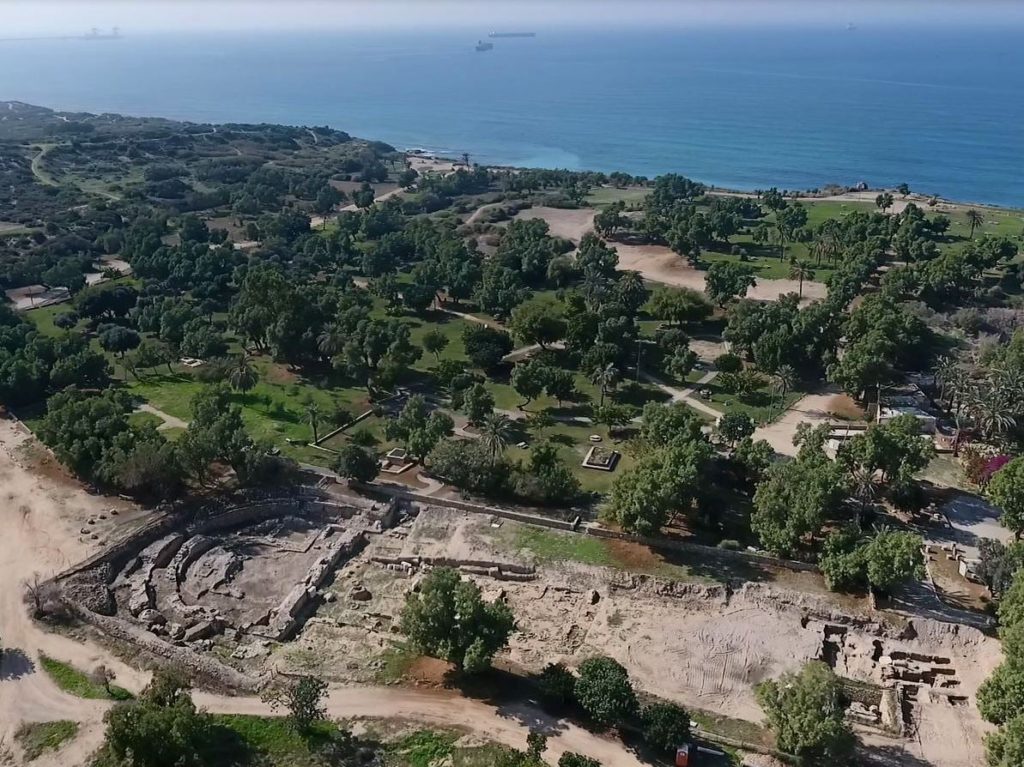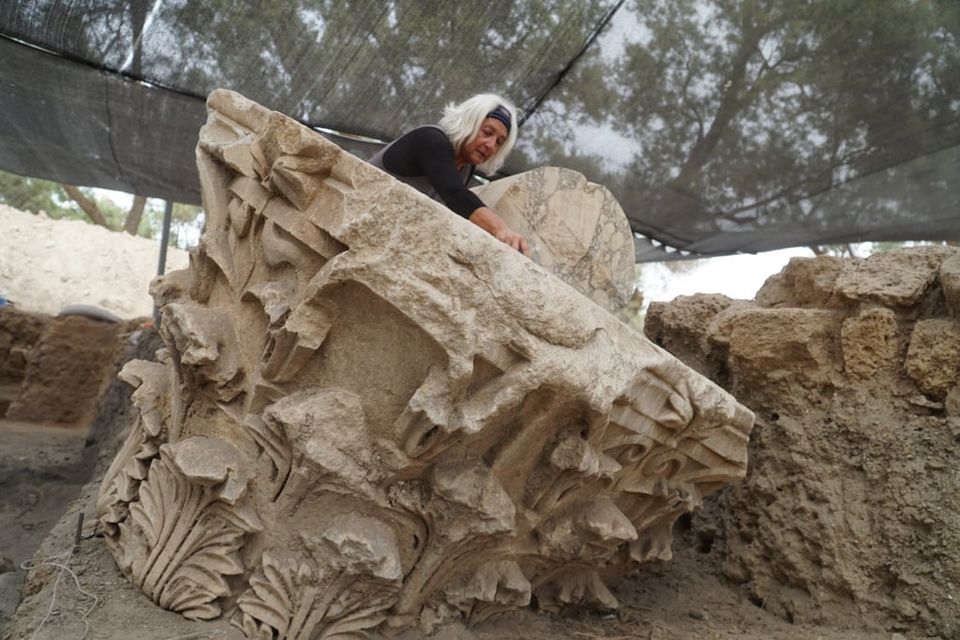
An enormous Roman-era basilica dating back to the reign of King Herod, containing statues of the Greek goddesses Nike and Tyche, or Isis, was recently revealed in all its glory in Israel.
The basilica, like all other ancient structures of that type, was used as a grand hall which would host the public events of the city. Predating the Christian era, basilicas of that time were devoted to public use only.
In its time, the basilica, located just off the shores of the Mediterranean, boasted gleaming marble columns and sculptures of Greek gods and goddesses and also had its own odeon, or theater.

According to a report from the Jerusalem Post, the historical treasure was rediscovered in the 1920s in Ashkelon by British archaeologist John Garstang, the leader of an expedition on behalf of the Palestinian Exploration Fund. After initially unearthing the structure — the largest Roman-era basilica, or public building, in the country — he decided to cover it up again.
But all was not lost — and the basilica’s riches were just lying quietly to be uncovered yet again in our day.
The 2,000 year old building will once again open to the public after an extraordinarily ambitious restoration project, thanks to the Israel Antiquities Authority (IAA).

Archaeologists in Ashkelon have now revealed that the building is the country’s largest Roman-era basilica, or public building. Constructed during the first century B.C., the monumental structure dates back to the reign of Herod the Great, a Judean king who was immortalized in the Bible as a tyrant who ordered the killing of Israel’s first-born sons under the age of two.
The Jerusalem Post reports that archaeologists from the IAA excavated the remains of the building as part of conducting renovations at Tel Ashkelon National Park. The organizers of the project said in a statement that they aim to restore the building to its former splendor, allowing the public once again to walk past its graceful marble columns and sculptures of Ancient Greek gods and goddesses.

Aware that the basilica remains had been reburied a century years ago, archaeologists came back to the area in 2008, beginning the first of two recent excavation projects.
After the second dig finished its work in 2018, the Israel Nature and Parks Authority (INPA) partnered with the IAA, along with the city of Ashkelon and the Leon Levy Foundation, in an incredibly ambitious effort to reconstruct the historic site.
Dr. Rachel Bar-Natan, a director of the IAA excavation, along with Saar Ganor and Fredrico Kobrin, told the Post in an interview that Garstang had already calculated the dimensions of the building.
“And seeing the remains of the marble columns, made with materials imported from Asia Minor, he had suggested that the basilica dated back to the time of (Herod), since the historian Josephus described how the king built a colonnaded hall and other structures in the city,” she added.
Haaretz reports that coins discovered in the foundations of the building show that it was constructed during the reign of Herod, from 37 BC to 4 BC.
The gigantic basilica is approximately 360 feet long and 130 feet wide, with a colonnade, or row of columns, that were 40 feet tall. Like other basilicas constructed in the Greco-Roman world, it consisted of three parts, including a central gathering space and two side halls.
The archaeologists were able to pinpoint the provenance of the basilica’s marble architectural features to the late second century AD, when the Severan dynasty was in power in the Roman Empire.
The stately marble columns, with capitals engraved with depictions of plants and the Roman eagle once graced the building’s public spaces; imposing statues of the Greek goddess of victory Nike, as well as the Titan Atlas and the Egyptian deity known both as Isis-Tyche, once stood along its walls.
The researchers have now recovered almost 200 objects expertly carved out of marble which had been imported from Asia Minor.
IAA archaeologist Saar Ganor rhapsodized about the spectacular finds, telling Haaretz “You can see in your mind’s eye ships laden with marble, sailing to Ashkelon.”
Tragically, like so many buildings of antiquity, a major earthquake along the Dead Sea fault severely damaged the basilica in 363 AD. Perhaps unable to rebuild it, or afraid to, in fear of injury in its damaged state, the building was abandoned and left to its fate.
Several hundred years later, under the Abbasid (750–1258 AD) and Fatimid (909–1171 AD) caliphates, local people repurposed some of the building’s marble blocks and other pieces to be used in new construction projects.
The faces of the goddesses have been struck off; it is unknown if this was an intentional act of iconoclasts or if the damage occurred as a result of the earthquake.
Ashkelon and Israeli officials in charge of the gigantic project say that they hope visitors will soon be able to walk through the basilica and experience all its original grandeur.
They plan to place restored columns around the basilica in their original locations and replace the stones that once paved its floor.
Ashkelon Mayor Tomer Glam said in a statement announcing the restoration “The Ashkelon National Park is one of the most important ancient sites, both in Israel and in the world, and time and time again it emerges as one of the most visited sites in the country.
“I am convinced that the restoration and conservation work in the park, the new archaeological discoveries, and the development work — including new accessible paths —will contribute significantly to the park’s natural beauty.”
See all the latest news from Greece and the world at Greekreporter.com. Contact our newsroom to report an update or send your story, photos and videos. Follow GR on Google News and subscribe here to our daily email!



